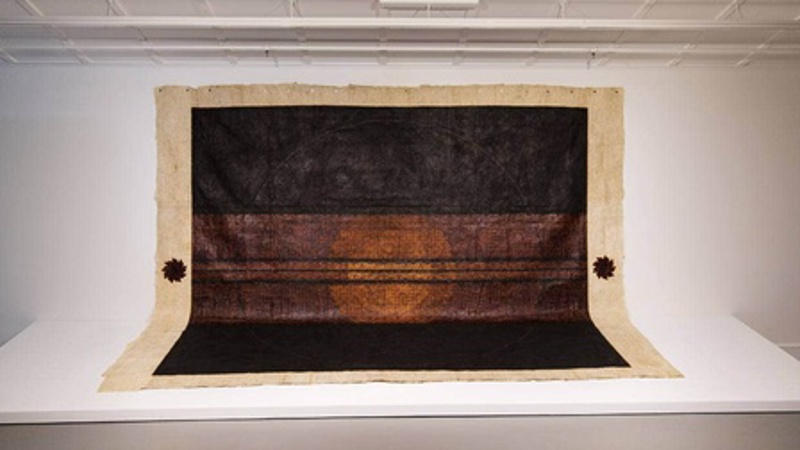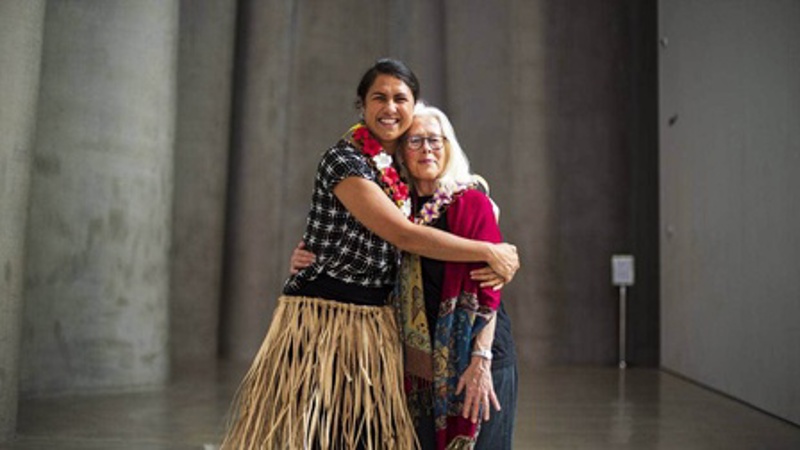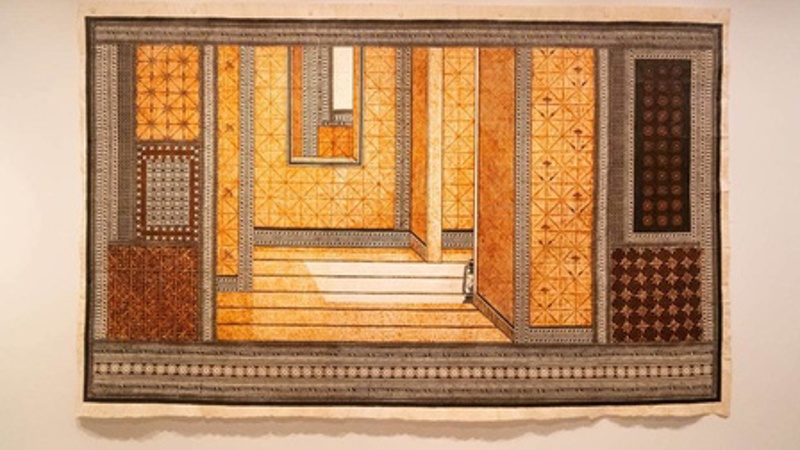The Tongan artist who never went to art school
By Federico Magrin / Taranaki Daily News / stuff.co.nz
At the same time, Ruha Fifita is also the international curator in residence at the contemporary art gallery, helping institutions in New Zealand engage with Pasifika artists.
The piece Fifita has on display is part of the gallery’s latest exhibition Te Au – Liquid Constituencies, which explores the frail conditions of oceans and waterways.
Her work is titled Lototō, a Tongan word that translates to humility and generosity, and is a 5m wide and 3m tall painting on bark cloth.
Fifita applied seven different layers of paint to mangrove tree bark cloth, and used a special Tongan way of catching black smoke with coconut cream from tuitui (candel nut) to create black shades on the bark.
The 32-year-old has had a different art education to most painters, as using natural dyes on bark cloth was a “heirloom” technique passed on by members of her extended family.
In Tonga, the art of working on ngatu, a cloth traditionally made from bark, which has been soaked and beaten flat, is a cultural heritage passed down from one generation to the other.
“In a lot of cultures of the Pacific, there is not really a separate word for art. It is often associated with how we generate knowledge, or how we hold on to knowledge and share it.
“Having this rhythm of engagement allowed me to learn and think systematically about the knowledge that has been generated by artists,” Fifita said.
Even though she learned to paint on ngatu at an early stage in her life, it was not until she met acclaimed New Zealand artist Robin White in Tonga 12 years ago that she understood art could be a full-time job.
“Working with Robin really helped me see art in a very different way.”
In Tonga, Fifita worked alongside White for up to 16 hours a day.
“We worked from seven in the morning until 10-11 at night and making art was the only thing you did,” she said.
At the time, White had travelled to Tonga to learn the art of painting on ngatu and took on a mentoring role with Fifita while also learning the secrets of painting ngatu from her “younger sister”.
“As soon as I met Ruha, I realised I was in the presence of a very young woman with a vibrant spirit, vitality, intelligence and wisdom,” White said.
“When I asked if she would be interested in us working together, I was absolutely thrilled when she said yes because I felt that this was someone who I can learn from. And so we started a journey together.”
White said the art of ngatu was a community affair because the materials used in the work had been sorted by “many, many hands”.
“The person who tilled the land, who grew and cared for the plant, the person who harvested it, the person who beat the cloth, the person who went and gathered the powder pigment, the burning of the tuitui to make the black. These are all contributions that require care and love and attention.
“It cannot be done by one person, it has to be done by a team, because of its size and the demands of the actual process,” White said.
After working together for many years, White and Fifita had their collective works exhibited at Te Papa in Wellington and Pataka in Porirua, as well as in art galleries in Australia, Korea and Japan.
Lototō from Ruha Fifita is on display at Govett-Brewster until March 20, 2023.


